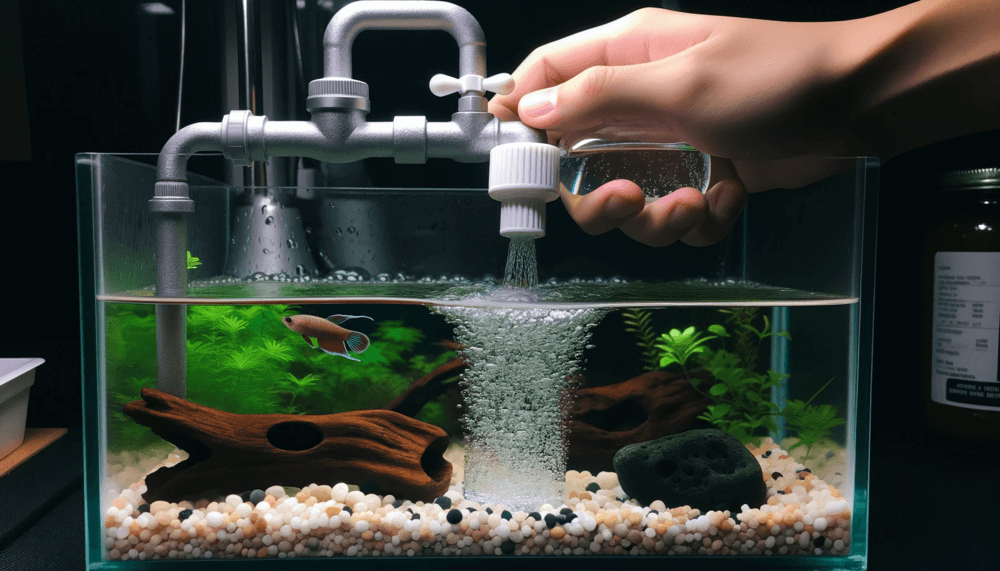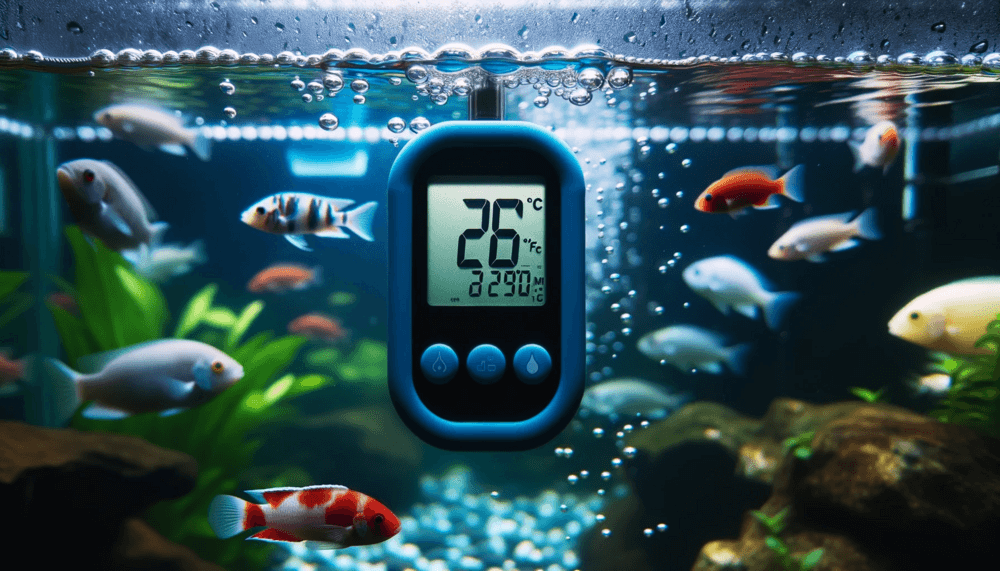Can I Keep Predatory Fish With Community Fish?
So you’ve been bitten by the fishkeeping bug and are now wondering if it’s possible to keep predatory fish together with community fish in your aquarium. Well, good news! In this article, we’ll explore the exciting world of mixing these contrasting species, and discuss the potential challenges and considerations that come with it. From understanding compatible tank mates to ensuring the safety and well-being of all your aquatic companions, we’ve got you covered. So let’s dive in and discover if your dream tank can indeed become a harmonious home to both predators and peaceful community fish.
Choosing Predatory Fish
If you’re interested in keeping predatory fish in your aquarium, it’s essential to start by researching different species. Take the time to learn about their specific requirements, behavior, and compatibility with other fish. Many predatory fish can be quite aggressive and may not be suitable for a community tank. By conducting thorough research, you can ensure that you choose the right predatory fish for your setup.
Researching Predatory Fish Species
Before selecting any predatory fish for your tank, it’s crucial to understand the unique characteristics of the species you’re considering. Research their typical size, preferred water parameters, dietary needs, and compatibility with other fish species. This information will help you make an informed decision and set your tank up for success.
Consideration of Fish Size
When choosing predatory fish, it’s vital to consider their adult size. Predatory fish, such as certain species of cichlids or catfish, can grow to be quite large. If you have a smaller tank or prefer smaller fish, it’s best to opt for smaller predatory species. This will ensure that your fish have enough space to swim and thrive without overcrowding the tank.
Determining Behavior and Activity Level
The behavior and activity level of your predatory fish will play a significant role in their compatibility with other community fish. Some predators are more aggressive than others, while some may be relatively peaceful. It’s important to consider the general temperament of the species you’re interested in and whether it may pose a threat to the other fish in your tank. For example, aggressive predators such as pike cichlids or tiger oscars may not be suitable for a community tank.
Selecting Community Fish
If you’re planning to keep predatory fish in a community tank, it’s crucial to choose compatible species that can coexist peacefully. This requires careful consideration of the temperament and behavior of both the predatory fish and the potential community fish. By selecting species that have similar temperaments and activity levels, you can increase the chances of maintaining harmony in your tank.
Choosing Compatible Species
When selecting community fish, it’s crucial to choose species that are compatible with your predatory fish. Look for fish that have a reputation for being resilient and can withstand the occasional aggression. Peaceful and fast-swimming species such as danios, tetras, or mollies may be good choices. Avoid selecting delicate or slow-moving fish that may become easy targets for your predatory species.
Considering Similar Size and Behavior
In addition to compatibility, it’s essential to consider the size and behavior of the potential community fish. Select species that are of similar size or slightly larger than your predatory fish to prevent them from becoming easy prey. Additionally, choose fish that have similar activity levels to ensure they can keep up with the more active predatory species.
Examining Water Parameters
Another crucial consideration when selecting community fish is the compatibility of their preferred water parameters. Different fish species have specific requirements for temperature, pH, and water hardness. Ensure that the water parameters of the community fish align with those of your predatory fish to prevent any health issues or stress for your fish.
Tank Setup
Once you have chosen your predatory fish and selected compatible community species, it is essential to set up your tank in a way that promotes harmony and reduces stress. Consider the space, hiding places, and water currents within your aquarium to provide a suitable environment for all the fish.
Providing Sufficient Space
Predatory fish usually require ample space to swim and explore. A cramped tank can lead to stress, aggression, and territorial behavior. Ensure that your tank is of adequate size to accommodate the size and activity level of your predatory fish. Research the specific space requirements of the species you plan to keep and provide a tank that meets or exceeds those requirements.
Creating Hiding Places
Creating hiding places within your aquarium is crucial for both predatory fish and community fish. Hiding spots help reduce stress and provide a sense of security for all the fish in your tank. Rocks, caves, driftwood, or plants can all serve as hiding places. Be sure to arrange them in a way that allows all fish to access the hiding spots without any aggressive dominance.
Modifying Water Currents
Some predatory fish prefer slow-moving water, while others thrive in strong currents. It’s essential to consider the water current preferences of your fish when setting up your tank. By placing appropriate filters or adjusting the flow rates, you can create an environment that suits the needs of all the fish in your tank. Avoid creating excessive turbulence that may cause stress or discomfort to any of the fish.
Feeding Predatory Fish
Feeding predatory fish can be a fascinating endeavor. It’s important to select suitable prey and ensure they receive adequate nutrition without overfeeding.
Suitable Prey Selection
Predatory fish often require live or frozen food to meet their dietary needs. Research the specific prey preferences of your species and provide a varied diet. Prey items such as small fish, shrimp, or insects can provide essential nutrients and promote natural hunting behaviors. Always ensure that the prey items are appropriate in size and nutrition for your predatory fish.
Ensuring Adequate Nutrition
In addition to selecting suitable prey, it’s essential to provide a balanced and nutritious diet for your predatory fish. Commercially available foods designed for carnivorous fish can serve as a supplementary source of nutrition. These foods are formulated to meet the nutritional needs of predatory fish and can be fed in combination with live or frozen prey. Ensure that your fish receive a varied diet to promote optimal health and growth.
Avoiding Overfeeding
Overfeeding can lead to health problems in predatory fish and disrupt the balance within your tank. Predatory species may have ravenous appetites, but it’s crucial to resist the urge to overfeed them. Follow the recommended feeding guidelines for your particular fish species and observe their behavior and feeding habits closely. If you notice any uneaten food or excessive waste, adjust the feeding amounts accordingly. Remember, a well-fed fish is a healthy fish.
Monitoring Fish Behavior
Maintaining harmony in a tank with predatory and community fish requires careful observation and proactive measures to prevent conflicts.
Maintaining Tank Harmony
Regular monitoring of your tank’s inhabitants is essential to ensure that all fish coexist peacefully. Keep an eye out for any signs of aggression or stress. If you notice any issues, take immediate action to address the problem before it escalates. Maintaining tank harmony is crucial for the well-being of all the fish in your aquarium.
Observing Aggression and Predatory Tendencies
Watch out for signs of aggression or predatory tendencies in your fish. Aggressive behavior, such as prolonged chasing, fin-nipping, or attacking other fish, should not be ignored. While some aggression is natural, excessive or continuous aggression can lead to stress and harm to other fish. If you observe any problematic behavior, consider rearranging tank decorations or removing fish if necessary.
Resolving Conflicts
If conflicts or aggression persist, it may be necessary to separate the predatory fish from the community fish. Depending on the severity of the aggression, this can be achieved by relocating either the predatory fish or the community fish to a separate tank. It’s important to prioritize the well-being of all the fish involved and take appropriate measures to resolve conflicts.
Potential Risks and Challenges
Keeping predatory fish with community fish poses certain risks and challenges that should be considered before embarking on this aquarium setup.
Increased Stress Levels
Predatory fish naturally evoke a degree of stress in their tankmates due to their hunting instincts. This stress can potentially impact the overall health and well-being of the community fish. It’s important to monitor stress levels closely and make adjustments to your tank setup or fish selection if necessary.
Potential Injury or Death
Aggressive predatory fish can cause harm or even death to other fish in the tank, especially if they are significantly smaller or more delicate. It’s crucial to be aware of this risk and take appropriate precautions to minimize the chances of injury or fatalities. Carefully selecting compatible species and monitoring fish behavior can help mitigate this risk.
Impaired Health and Growth
Predatory fish may exhibit varying degrees of territorial behavior, which can result in stress for the other fish in the tank. Prolonged stress can lead to impaired health, compromised immune systems, and stunted growth in the affected fish. Regular monitoring and proactive measures to address any issues promptly can help prevent these negative effects.
Alternative Options
If keeping predatory fish with community fish seems daunting or too risky, there are alternative options that may better suit your preferences. Consider the following alternatives:
Species-Only Tanks
Creating a species-only tank allows you to focus solely on the needs of your predatory fish. By eliminating the potential conflicts of community tanks, you can provide a suitable environment specifically tailored to the predatory species you choose.
Semi-Aggressive Community Tanks
If you still desire the excitement of keeping predatory fish with other species but want to minimize the risks, consider setting up a semi-aggressive community tank. This type of tank includes a carefully selected mix of predatory and more robust community fish. With proper research and planning, it is possible to create a harmonious tank where aggression is minimized.
Species-Specific Communities
Another alternative is to create species-specific communities. This involves selecting multiple fish of the same species that can coexist peacefully. By recreating their natural habitats and social structures, you can provide a dynamic and engaging environment for your fish.
In conclusion, keeping predatory fish with community fish is possible with proper research, careful considerations, and proactive monitoring. By understanding the specific needs and behavior of your fish, providing suitable tank setup and feeding strategies, and addressing any conflicts that may arise, you can create a balanced and harmonious environment for your aquatic companions. Remember, the key to success lies in making informed choices and prioritizing the well-being of all the fish in your tank.

